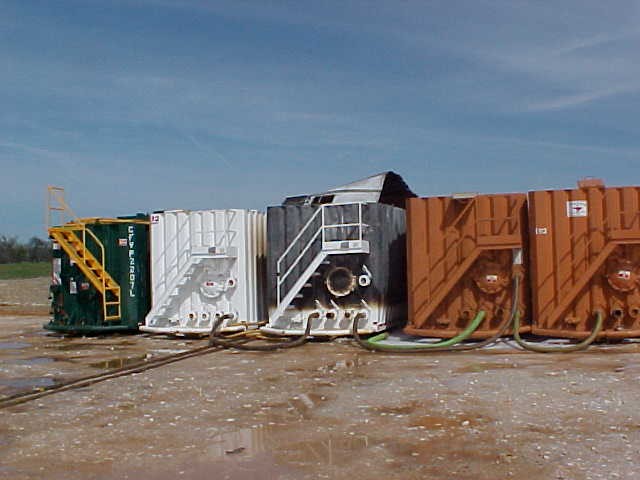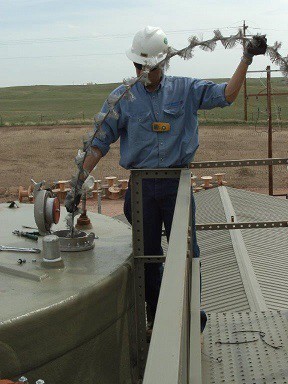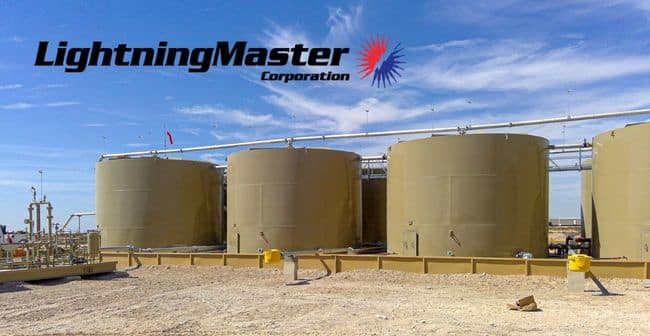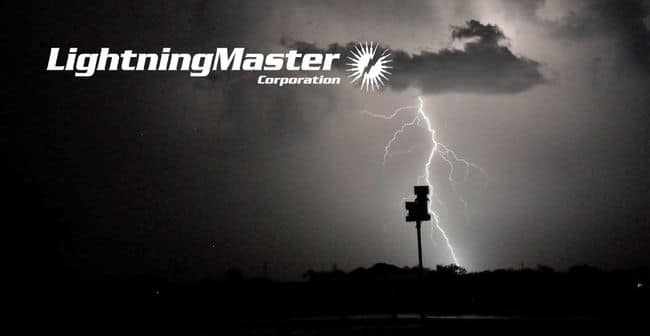Several years ago, Lightning Master modified one of its existing products, an appliance designed in the mid-1980s to be part of a lightning protection system for tall broadcast towers, to serve to mitigate the danger of ignition in petroleum processing and storage tanks from static and lightning. In the case of static, it acts to neutralize static charges. In the case of lightning, it acts to equalize potential.
The resulting appliance is called the In-Tank Static Drain (ITSD). It consists of a central 316 stainless steel cable with small electrode wires inserted through it. The wires are available in 316 stainless, titanium or Hastelloy, as dictated by the environment in which it is installed.
STATIC
Occasionally, when filling a tank with no lightning in the area, the tank will suffer an apparently random ignition. The problem seems to be most acute when initially filling an empty tank. This applies to both open and closed tanks, and is particularly acute with fiberglass tanks. When the tank was drawn down, air was pulled into the tank, so oxygen became available for ignition. When filling the tank, fluid is subject to actions most likely to produce a static charge. In the case of a production/disposal tank, the fluid falls as far as possible, breaking it into smaller droplets so it settles out more quickly (think gun barrel). This action also imparts the maximum static charge into the fluid. In the case of a fracking flowback tank, a large volume of fluid is injected into the tank at a high velocity, allowing it to “scuff” along the exposed inside of the tank, again producing maximum static charge.
According to American Petroleum Institute API 2003, 4.1, sparks from static electricity are a significant source of ignition. For an electrostatic charge to be a source of ignition, four conditions must be present:
- a means of generating an electrostatic charge
- a means of accumulating an electrostatic charge capable of producing an incendiary spark
- a spark gap
- an ignitable vapor-air mixture in the spark gap
Ignition hazards from static sparks can be reduced by controlling the generation or accumulation of static charges or by eliminating a flammable mixture where static electricity may be discharged. The risk of ignition can also be reduced if spark promoters are avoided in areas of potentially high electric field.
Normal tank operations are capable of generating an electrostatic charge in both production/disposal and fracking flowback tanks. Any tank, particularly fiberglass or lined steel, can accumulate a charge capable of producing an incendiary spark. There are plenty of spark gaps present in most tanks. In steel production/ disposal tanks, the thief hatch is a major source. In fiberglass tanks, any mass of inductance not bonded into all other masses is a source. In flowback tanks, the filler neck appears to constitute the spark gap to the charge in (and above) the product. The flammability of the mixture is, for the purposes of this discussion, beyond normal control.
When we initially designed the ITSD, we looked for guidance to National Fire Protection Association NFPA 77, Recommended Practice on Static Electricity. Chapter 8, Control of Static Electricity and Its Hazards by Static Eliminators and Personnel Factors, discusses inductive neutralizers. These devices do not prevent the generation of static charge. They provide ions to neutralize the static charge.
The design of an inductive neutralizer consists of sharply pointed elements arranged for placement in the static electric field. In a production/disposal tank, the ITSD is grounded (actually bonded) to the collar of the thief hatch, which is further bonded to site ground. In a fracking flowback tank, the ITSD is bonded to the filler pipe and tank structure, which is further bonded to site ground through the tank structure.
With the ITSD, the thousands of small radius points produce a localized electrical breakdown known as corona, ejecting ions that are free to travel to distant charges of opposite polarity, thereby reducing any arc producing difference in potential.
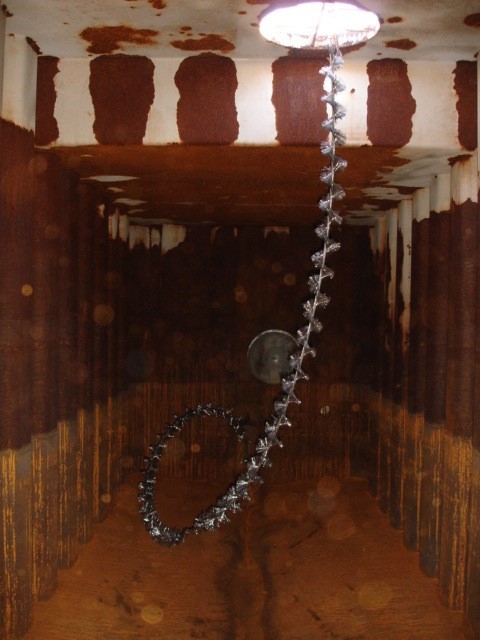
LIGHTNING
Lightning affects primarily production/disposal tanks. In this application, the ITSD is installed through the thief hatch, and mechanically se¬cured and electrically bonded to the thief hatch collar, which is further bonded to ground.
The primary cause of ignition at petroleum production and disposal sites is arcing caused by lightning EMP and secondary effect. Therefore, the basis of effective protection is the bonding of all masses capable of incurring a charge and arcing to another mass at a different potential. These masses must be electrically bonded to all other masses with appropriately sized conductors. On a steel tank, the construction of the tank accomplishes this role. The only masses requiring dedicated bonding are appurtenances such as thief hatches and other objects with moving or insulated parts. The thief hatch requires bonding between the hatch and its collar. On a fiberglass tank, all masses must be electrically bonded, including those described above, plus piping, valves, bull plugs, carbon veil (if installed), walkways, etc.
The wild card in tank protection has always been equalizing the charge on (actually just above) the stored product. Charge dissipates from a liquid onto points and edges. Even in a steel tank, there are none to help dissipate the bound charge on the stored product. The liquid simply lies against the side of the tank, and the charge takes time to relax. The ITSD “sucks the charge” out of the product, allowing it to equalize much more quickly.
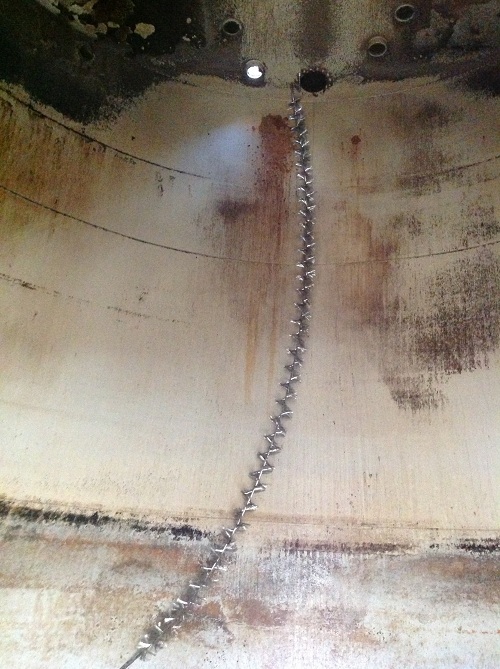
GENERAL
Fiberglass tanks have historically proven to be more susceptible to lightning and static ignition than steel tanks. However, it is not the construction of the tank, but the content of a tank that determines the need for in-tank static control. The problem tanks tend to be produced water, not oil tanks. Oil is basically too rich to ignite, whereas the vapor in a water tank is occasionally just right. Therefore, an ITSD should be installed in any tank containing produced or recovered water, regardless of tank construction material.
Inside a tank, the electrical charge is actually contained in the air/gas vapor immediately above the fluid. The insulating air between the droplets allows the static charge to build. Therefore, the ITSD must be sufficiently long and positioned so that it penetrates the surface of the stored product at all fill levels in production tanks. In flowback tanks, it should be positioned so it is located in the area where mist is created during filling operations.
In order to have a tank ignition from static, all four conditions mentioned previously must be present. The ITSD helps control the second condition, neutralizing static charge before it can build to an incendive level. In flowback tanks, it can also eliminate the third condition by bonding the gap between the charge on the recovered water and the filler neck.
The ITSD has been safely and successfully employed in thousands of production tanks, saltwater disposal tanks, and fracking flowback tanks. It is a simple, common sense solution to helping to control tank ignitions.

